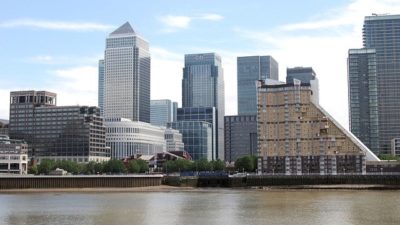Brookfield Property Partners (TSX:BPY.UN)(NASDAQ:BPY) stock has underperformed the industry over multiple periods.
BPY data by YCharts. The three-year price action of NASDAQ:BPY, Real Estate Select Sector SPDR with ticker NYSE:XLRE, and iShares Global REIT ETF with ticker NYSE:REET
Brookfield Property stock may be weighed down by a number of reasons, including the potential impacts of Brexit or “British exit” and concerns that malls aren’t as safe an investment as they used to be.
The beaten-down stock now offers an attractive yield of nearly 7.1%. Is it a safe way to earn rental income?
Brexit
The United Kingdom is due to leave the European Union in a couple months on March 29. The aftershock to the economy in the U.K. could be devastating. Here’s a Bloomberg quote, “the Bank of England said the prices of malls, offices and hotels could fall by almost 50% if Britain leaves the European Union without a deal, i.e., the withdrawal agreement.”
How much U.K. exposure does Brookfield Property have?
Brookfield Property has about 13% of its assets under management in the U.K. or Europe. In the first three quarters of 2018, Brookfield Property reported roughly US$1 billion of net operating income (NOI) from its core office portfolio.

Its U.K. exposure is London (primarily, Canary Wharf), and it contributed a little over 15% to its core office portfolio and only about 6% to its core office and retail portfolio. So, Brookfield Property has little exposure to the U.K.
Compared to the same nine-month period in 2017, the NOI from London declined 6.7% in pounds and almost 1.2% in U.S. dollars. In the last reported quarter, Brookfield Property’s London occupancy improved by 70 basis points to 96.5% compared to the same quarter in 2017. Further, the average in-place net rents increased by 3.8%.
The recent performance of Brookfield Property’s core retail portfolio
Brookfield Property experienced same-property NOI growth of 1.6% for its core retail portfolio in the first nine months of 2018 compared to the same period in 2017. And total NOI declined by almost 2.7%. The occupancy declined 80 basis points to 94.6%, while the average in-place rents per square foot remained essentially stable.
Brookfield Property’s cash distribution remains safe
Brookfield Property’s overall portfolio is holding its ground. In the first three quarters of 2018, Brookfield Property’s funds from operations (FFO) remained stable at $1.04 per unit compared to the same period in 2017. That implied a recent payout ratio of 91.3%.
A part of Brookfield Property’s strategy is to invest in mispriced properties for risk-adjusted outsized gains in its opportunistic portfolio. Throwing in the booked profits for this portfolio, the FFO payout ratio quickly reduced to about 84% in the nine-month period.
Investor takeaway
Brookfield Property’s IFRS value per unit dropped about 7% from the end of 2017 to the end of September 2018. The stock is now trading at a huge discount of about 38%.
Management is committed to increasing the cash distribution by 5-8% per unit every year. And now is a rare chance to grab a 7% yield for starters, while the stock is cheap.








